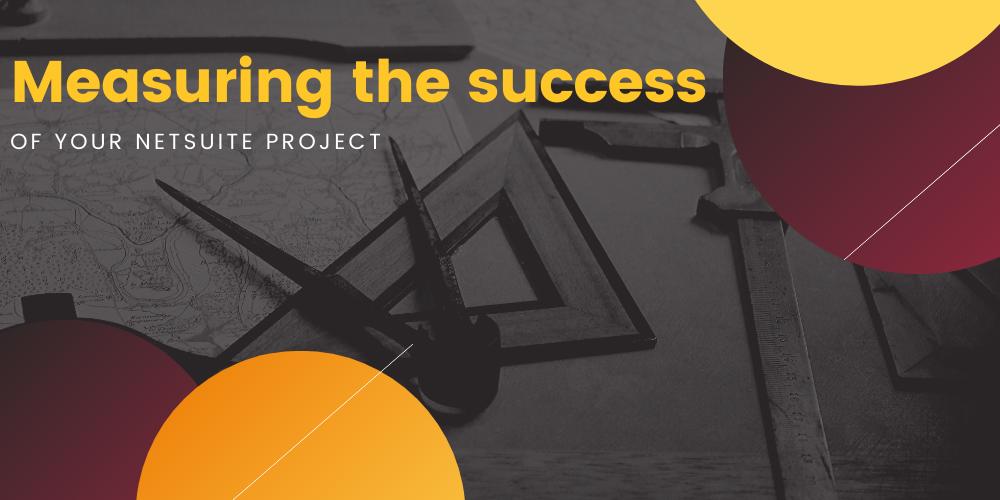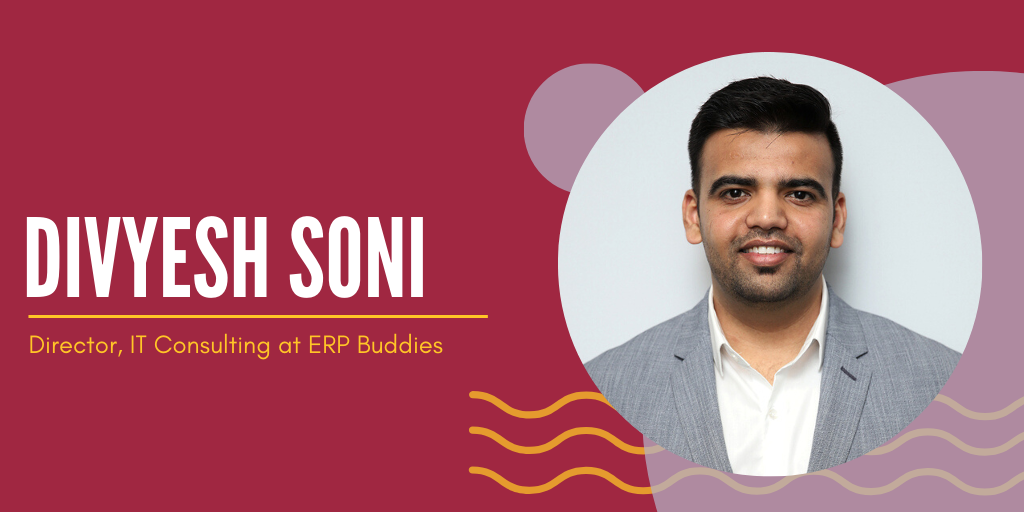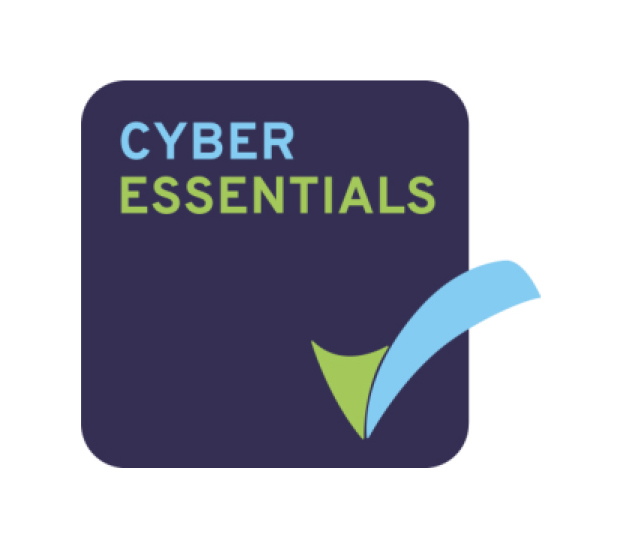
ERP implementation is often quite complex, and according to our market trends and Salary Survey, the project duration can last to up to six months. How can you tell if your NetSuite project management is effective, how do you benchmark progress, and how do you measure the success at the end of it?
In this article, we will explore the different stages of a NetSuite ERP implementation and what tactics you should be using to measure the success of your NetSuite project.
Preparing for a project – analysis and design
Preparation is the most crucial stage of your NetSuite implementation project, as it allows you to define the critical aspects of the project before going forward, helping you to start on the right foot by ensuring your time and money aren’t wasted.
In the preparation stage, it’s essential to communicate with all of the teams in your company that will have any involvement with the project. By getting personnel on board from an early stage, you gain an insight into what each department will require from the new system and gather support to help drive the user adoption of across the organization during the deploying stage.
Avoid an internal communication breakdown during your NetSuite project.
You’ll need to think about the following things:
Defining company vision
The first question you need to ask yourself is, what is the end goal? To ensure your implementation is successful, you need a clear vision of which business goals and outcomes you want to achieve with your NetSuite ERP. So ask yourself, where would your business be after the project is successful? Will you be harnessing your data to strengthen your existing internal system? Will your sole focus be to improve customer experience? And how much extra revenue will you generate?
This is where communication is critical, as your vision may not be a true reflection of the ideal outcome for everyone, so record what your team needs from the new system. However unrealistic or bizarre their ideas are, understanding the needs of the different departments from your employees will help move the project along, and improve user adoption post-implementation.
Here are some of the more common business goals that adopting NetSuite can help you work towards:
Unified business operation: develop a unified system that covers all aspects required to run your business.
Tailor your business needs: use the NetSuite re-imagined business’ consumption model to allow your company to consume capabilities based on your business needs.
Streamlining the sales process: the supply chain control tower can enable planners, buyers, and operation users to increase on-time delivery and optimize supply chain efficiency.
Unlock growth: a successful roadmap that will allow you to unlock new opportunities through agile adaptable business dynamics.
You’ll need to understand that different departments will have different priorities. For example, your sales team is all about efficiency and revenue, whereas the marketing and customer experience team is less concerned with efficiency and more concerned with the quality of the brand’s identity. It’s important to acknowledge every department’s priority and settle on an agreed company vision that each project stakeholder can work towards every day of the project.
Desired outcomes, prioritizing goals
Once you’ve spoken to each department representative and their different requirements for the ERP system, you can now start prioritizing the company’s goals and choose the specific outcomes you want to work towards.
As nice as it would be, the probability of satisfying the needs of everyone will be unfeasible for the business. While cutting or deprioritizing specific objectives may seem like a savage approach, there is actually a reasonably simple way to lead the process.
Analyze each desired project outcome and benchmark it against your company goals and immediately rule out any that don’t reflect the current company’s vision. It’s worth keeping a note of the rejected ideas as they could be utilized further down the line.
For the remaining outcomes, try to determine which of them reinforces your company’s vision, which of them are in support but not directly, and which would be a luxury to have in the future but is not essential to the current company goals. If it’s possible, try to rank or prioritize them.
Establishing roles
Once you’ve worked out the essential outcomes of your new ERP system, you’ll need to start assembling an internal team to lead the implementation and ensure the project sticks to deadlines. Remember, your team doesn’t have to be very large, as each team member can cover a range of different roles.
Learn our top tips to avoid NetSuite staffing mistakes.
Your NetSuite project management dream team:
Executive sponsor:
This person will have full visibility of the implementation and will lead the project team from the front; they will be in charge of communicating with all stakeholders throughout the entire process.
Project owner:
Unlike the executive sponsor, you should expect the project owner to have a technical understanding of your business process so they can appropriately map it to your NetSuite ERP — this will usually be an IT manager or the CIO.
Admin:
Someone you’ll assign to manage your NetSuite ERP on a day-to-day basis, and who will see the project through the implementation and beyond. This position is often filled by a NetSuite admin specialist or internal employee with NetSuite training.
Product Champion:
Think of this person as your super-user. Their task will be to drive user adoption by involving the department heads and future end-users from an early stage.
Develop a project timeline
Developing a project timeline during the planning stage of your NetSuite implementation is crucial for the success of the project. Not only will it help you monitor the project budget and manage your team better, but it will also make it easier for you to measure the performance of the implementation. Having the ability to benchmark the success of the implementation can help you manage expectations, monitor risks and give your team early warnings of problems, and utilize data that can improve the management of a NetSuite project.
According to the experts at ERP Buddies, this is the best way to measure the success of your ERP implementation:
“Long term deliverables are the key milestones in any given project. A TSA deadline, a Conference Room Pilot, and a Blackout period for operations. Setting the dates and meeting these deliverables will need to be prepared well in advance.
“Short term deliverables are tasks and projects that need to be completed in a relatively faster timeframe. They typically roll up to a long-term deliverable, but there are instances of Ad hoc requests – a customized report needs to be generated or non-business impeding customization. In any case, it always helps to understand the long-term deliverables so you can determine how short-term tasks and projects affect the overall project.”
In all honesty, this is why it’s essential to have a good NetSuite implementation partner or someone who has been through the process before. They will be responsible for utilizing the information from your current data storage, discovering what you want from your new software, and helping you devise a project timeline that tailors the four core phases of a project (planning, developing, testing, and deployment), to your business’s implementation.
“Often, a larger project requires multiple partners for implementation. This is true when departments and operations have a large staff and, by extension, more managerial roles. Given the natural workload that stems from meeting implementation deliverables, project timelines, and milestones, a client may feel like more consultants from many partners is the answer. Make no mistake – tasks and projects will overlap, and this, in return, will require alignment meetings where solutions may clash and need to undergo a redesign.”
Configuration
The configuration stage of your project is critical to the ongoing success of your NetSuite implementation. If you open the settings in your current software, you will essentially be looking at the configuration management running your servers, networks, data centers, IT assesses, configuration files, and operating systems — basically, your entire business’ operation.
When you’re changing ERP software, it’s crucial to carefully track every change made during the configuration stage to guarantee traceability and prevent data complications post-implementation.
Data mapping and cleansing
Data quality is vital when considering migrating your current system to a NetSuite ERP. It’s important to ensure your data has been cleansed and mapped before migrating it to the new system; this will increase the overall productivity of your new ERP.
A productive exercise is to become familiar with the field in your new ERP and use this to group the data in your source system. That way, you can cleanse and organize your data, and know precisely what your new ERP is looking for.
Data cleansing:
Now you’re familiar with the depth of your data and how your records compare to the new system, you can start cleaning up your data and preparing it for migration. Data profiling is a critical element of the cleansing process. It will help you evaluate the quality of the data, whether you can address data abnormalities or repeat errors in bulk, and how you will plan to map your data to migrate to the new platform.
Data mapping:
Once you’ve cleaned your data, you can begin to match the fields from your current ERP system to your new NetSuite ERP. The data you leverage from the mapping stage will help you extract and unify valuable information from your existing external and internal sources and transform it into a more suitable format for your new ERP system.
That complexity of the data mapping stage will vary for different businesses, but with every case, it’s essential to consult a technical expert who can help you create a clear data migration timeline, support each department to ensure they understand precisely what is required of them, and assure the overall data migration stage is a success.
51% of business owners chose to implement a NetSuite ERP system because of its capability to manage data migration
To gain further insight into ERP implementations, download our independent NetSuite market report.

Anderson Frank’s NetSuite Market Trends and Salary Survey takes a comprehensive look at salaries across all NetSuite positions and explores workplace benefits and factors that influence job satisfaction, as well as industry trends, giving you the most up-to-date and comprehensive snapshot of the NetSuite community available anywhere.
Development – NetSuite project management methodologies
This stage of the project will focus on the configuration and development of your company’s new ERP system. Depending on the project complexity, the number of teams involved, and partner participation, this stage will most likely follow a waterfall or agile methodology. Consistent demonstrations and check-ins are vital for the success of this phase. You want to measure the progress of build items to ensure the deliverables will be on time and budget.
If a NetSuite partner uses a hybrid methodology, they will often transition to agile during this stage to analyze and develop the project’s user stories.
A user story is a tool used in an agile methodology to capture the description of a software feature from the perspective of an end-user. It often helps the implementation team develop a system with the end-users in mind to ensure the final product can be easily adopted.
User stories are typically divided into two-week sprints, the end of which features a sprint demo. This demo should be compared to the user stories and signed off at the end of each sprint.
According to Divyesh Soni, Director and IT Consultant at ERP Buddies, the best methodologies for an ERP implementation are Waterfall, Agile, and Scrum 10. He also suggested using one of the following project management tools: Teamwork, JIRA, Monday.com, Workbook, or Mavenlink.

Divyesh is responsible for managing the delivery of NetSuite’s professional services and implementations for ERP Buddies Inc.’s clients. Divyesh assesses client needs, develop plans to solve their problems, and implements these plans to help clients find creative ways to run their businesses more effectively utilizing the technology as a driver.
He delivers NetSuite including configuration, process re-engineering, and support escalation. Divyesh plans, manages, and communicates the progress of the project, achieving project milestones and maintaining the momentum of projects. He documents business processes, business mapping, business requirements, and meeting notes. He maintains control of multiple projects and assignments while sticking to tight deadlines. Divyesh ensures team billable utilization targets are met.
Testing
No data migration should proceed without prior testing. The most effective way of doing this is to subgroup the data and test one section at a time. Begin by examining the smaller groups of data — like a product’s inventory — and move to larger groups when you are confident each data map is working correctly. This will prevent any problems arising and allow you to identify and remove any incorrect data.
Project health checks
Detecting issues early on in the project can increase the success rate of your NetSuite implementation. Having regular project health checks can provide you with an ongoing status of how the project is going and determine where areas may need improving. Completing health checks is a great learning opportunity for you and your team. It can help you capture and resolve issues without delaying the project or eating into your budget.
Here are a few ways to perform a project health check:
- Review the original project objectives to determine if they are still relevant.
- Conduct regular risk assessments.
- Regularly measure time management, budget, and quality control.
- Communicate regularly with your implementation team.
- Monitor your resources to ensure they’re being used efficiently across the team.
Deployment
This is the final stage of the project, where the final requirements move into production and end-users can begin to use the new software. The deployment stage is split into three phases; pre-deployment training and prep, deployment, and post-deployment support.
To guarantee this stage is successful, it is essential to create a deployment roll-out plan. Many experts suggest starting deployment over the weekend to prevent impacting the business throughout the week. However, for some IT teams, it might be worth considering deploying earlier in the working week so you have time to fix any major issues.
If you need to provide training to users, this will need to be done before the launch date to avoid any issues post-implementation.
Throughout the deployment, both yourself and your NetSuite partner will need to pull your resources together to ensure there is a pain-free launch. Both teams will need to be available for any final fixes or deployment issues.
For your deployment phase to be successful, you’ll want to align the project phases with your initial project timeline. That way, you can keep a close eye on any obstacles or delays during deployment, it’s important to hold your partner and internal team accountable if there is a delay in the schedule.
Driving adoption of the product
Your revolutionary new ERP system will become obsolete if your team refuses to use it. Lack of adoption post-roll-out is a common hurdle that most companies fall at. To ensure your project doesn’t fail, it’s essential to implement proper training and support that will provide your staff with the confidence to use the new system.
Training
It’s harmful to your business to wait until the system is live before beginning training, mainly when it can be done during the weeks leading up to the launch date. There is a range of different training opportunities for your team, from video tutorials to in-person training. We recommend liaising with your NetSuite partner to tailor a training program that is beneficial for your business.
Discover the range of NetSuite training resources.
Support and promoting go-live
Throughout the training stage of the project, you will hopefully notice a few of your employees who are engaged, savvy, and excited about the new ERP system. Regardless of their department or job role, it’s vital to utilize these individuals as they are valuable assets in the battle against user resistance. They will be your NetSuite champions who will share their knowledge, skills, and enthusiasm with their colleagues. These employees will help end-user adoption, so keep them involved in any system updates, customizations, or changes. They will act as a bridge between the tech experts and decision-makers and the rest of the organization — helping end-users learn and adapt to NetSuite from a grassroots level.
Another way you can promote the go-live campaign is gamified adoption. Adding healthy competition and incentives can motivate your employees to use the platform and help them feel more engaged with NetSuite ERP.
Measuring adoption
To measure user adoption, we recommend creating a dialogue for employee feedback over the months following the implementation. As well as utilizing your SuiteAnalytics and any essential plugins in SuiteApps, we would also suggest using NetSuite’s adoption service. They will help you to support the internal transition of your ERP system and provide you with tools that can help you sustain productivity and long-term user adoption.
Upgrading the NetSuite dashboard
Once you are satisfied that NetSuite is running efficiently in your business and your employees are comfortable using it, you can start to think about some of the goals you considered in the initial stages of the planning process. This is the time to introduce additional functionalities and smooth over any methods that can be implemented more efficiently with the new NetSuite ERP.
Utilize the NetSuite dashboards to do an in-depth report on your business to learn how the system has improved your internal process and boosted your bottom line. Finally, take advantage of the range of plugins and third-party applications available to you on SuiteApps. However, if you’re considering a more complex ERP upgrade, we suggest contacting a NetSuite consultant that can help you successfully expand your operations without impacting your existing system or disrupting business as usual.


